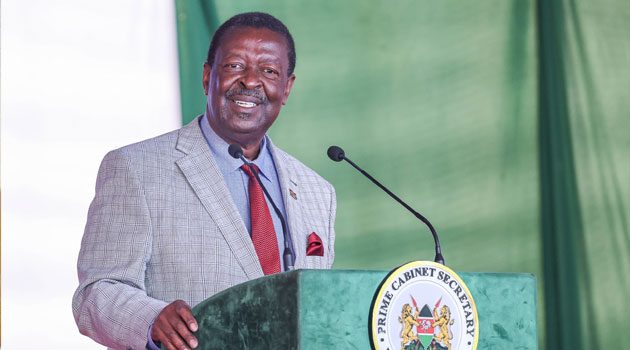Prime Cabinet Secretary Musalia Mudavadi has reaffirmed the government’s commitment to digitizing the capitation process in Kenya’s education sector. This strategic shift aims to enhance the transparency, accountability, and efficiency in the disbursement of funds to schools across the country.
Speaking during a recent briefing, Mudavadi emphasized that the new digital system will allow for closer monitoring of how capitation funds are utilized. He expressed concern over past reports of financial misappropriation, noting that an estimated Ksh 2 billion may have been misused under the current manual processes.
“The digitization initiative will help track every cent to the last person in the disbursement chain,” he stated. He underscored the importance of accountability among education officials, similar to expectations across all sectors of government.
The Prime CS noted that the digitization project is a joint effort between the Ministry of Education and the Ministry of ICT, leveraging platforms such as eCitizen and other digital payment systems to streamline operations.
With a budget of approximately Ksh 600 billion allocated to the education sector, Mudavadi said the government is keen on reevaluating the entire disbursement and audit process to ensure that funds are effectively supporting learners at all levels. He also acknowledged the challenges faced by university students, particularly in meeting basic needs such as meals, and affirmed the government’s resolve to provide comprehensive support to all deserving students.
Addressing opposition to the digitization plans, Mudavadi dismissed critics advocating for the continuation of manual systems, attributing their resistance to a desire to maintain avenues for misappropriation. “We must move forward and use technology to ensure that resources reach the students who need them,” he said.
Currently, school capitation funds are disbursed in three phases: 50% in Term 1, 30% in Term 2, and 20% in Term 3. With the digitization of this process, the government aims to ensure that future allocations are transparent and strictly used for their intended purposes.
This digital transformation marks a significant step toward enhancing governance in Kenya’s education system, ensuring that public funds directly benefit learners across the country.





